Introduction
Overview of Deer Jerky Recipe
Deer jerky Recipe offers a nutritious and flavorful snacking option beloved by outdoor enthusiasts and culinary adventurers alike. This protein-rich snack not only satisfies hunger on the trail but also serves as a delightful homemade treat that showcases the rich, gamey flavors of deer meat.
- Historical significance of jerky as a preservation method
- Its rise in popularity among modern consumers for its health benefits and portability
- The allure of homemade jerky over store-bought versions for its customizability and absence of preservatives
Benefits of Making Your Own Deer Jerky
Creating your own deer jerky allows for a tailored eating experience.
- Explore a plethora of marinades and drying methods tailored to your taste buds.Moreover, homemade jerky ensures that you are consuming a product free of unnecessary additives and high in essential nutrients.
- Flexibility in choosing ingredients to fit dietary needs and preferences
- Rest assured of the meat’s quality and origin, ensuring a savory experience.
- Dive into a world of flavor and texture experimentation.
Why opt for deer meat?
Its leanness, coupled with high iron and vitamin B content, makes it a stellar choice for health-conscious individuals. Furthermore, deer jerky is a great way to utilize any deer harvest, ensuring that none of the meat goes to waste.
- The nutritional advantages of using deer meat, like high protein and low fat
- Tips on selecting the right cut of deer meat for jerky
- How making deer jerky can be a sustainable practice by utilizing all parts of the harvest
For more information on the best practices for preparing and preserving meats, visit National Center for Home Food Preservation for comprehensive safety guidelines for drying meat.
Basic Deer Jerky Recipe
Print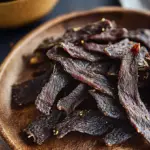
Basic Deer Jerky Recipe
- Total Time: 4-6 hours 15 minutes
- Yield: 8 servings 1x
- Diet: Gluten Free
Description
A simple and delicious recipe for making deer jerky at home.
Ingredients
- 4 tablespoons soy sauce
- 4 tablespoons Worcestershire sauce
- 2 tablespoons liquid smoke flavoring
- 1 tablespoon ketchup
- ½ teaspoon salt
- ¼ teaspoon pepper
- ¼ teaspoon garlic powder
- ¼ teaspoon onion salt
- 1 pound boneless venison roast
Instructions
Instructions:
- Slice the venison roast into thin strips.
- In a bowl, combine soy sauce, Worcestershire sauce, liquid smoke, ketchup, salt, pepper, garlic powder, and onion salt.
- Marinate the venison strips in the mixture for at least 4 hours, preferably overnight.
- Preheat your oven to 160°F (70°C) or use a food dehydrator.
- Arrange the marinated strips on a baking sheet or dehydrator tray.
- Dry the strips in the oven or dehydrator for 4-6 hours, or until they reach the desired
Notes
Adjust seasoning to taste; for a spicier jerky, add red pepper flakes.
- Prep Time: 15 minutes
- Cook Time: 4-6 hours
- Category: Snack
- Method: Dehydrating
- Cuisine: American
Nutrition
- Serving Size: 1 serving (approx. 2 oz)
- Calories: 120
- Sugar: 2g
- Sodium: 600mg
- Fat: 2g
- Saturated Fat: 1g
- Unsaturated Fat: 1g
- Trans Fat: 0g
- Carbohydrates: 3g
- Fiber: 0g
- Protein: 22g
- Cholesterol: 50mg
Keywords: Deer Jerky
For further insights on making the best venison jerky, check out The MeatEater and Outdoor Life.
STEPS
Step 1
Gather all ingredients.
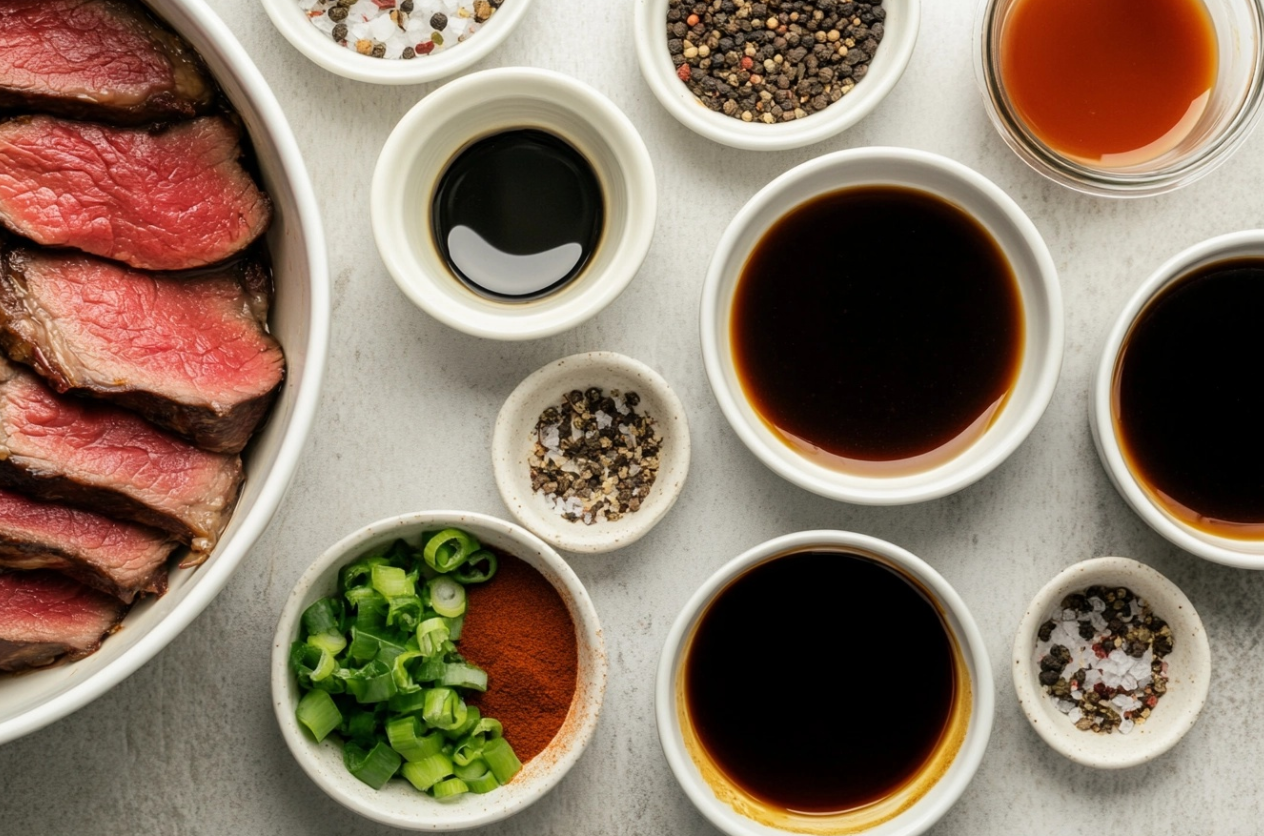
Step 2
Mix together soy sauce, Worcestershire sauce, liquid smoke, ketchup, salt, pepper, garlic powder, and onion salt in a large resealable plastic bag; set it aside.

Step 3
Cut the venison into long, thin strips, about 1-inch wide and 1/8-inch thick. Place the strips into the marinade-filled plastic bag and seal it tightly. Refrigerate for 8 hours or overnight, occasionally massaging the bag to ensure the marinade is evenly distributed.
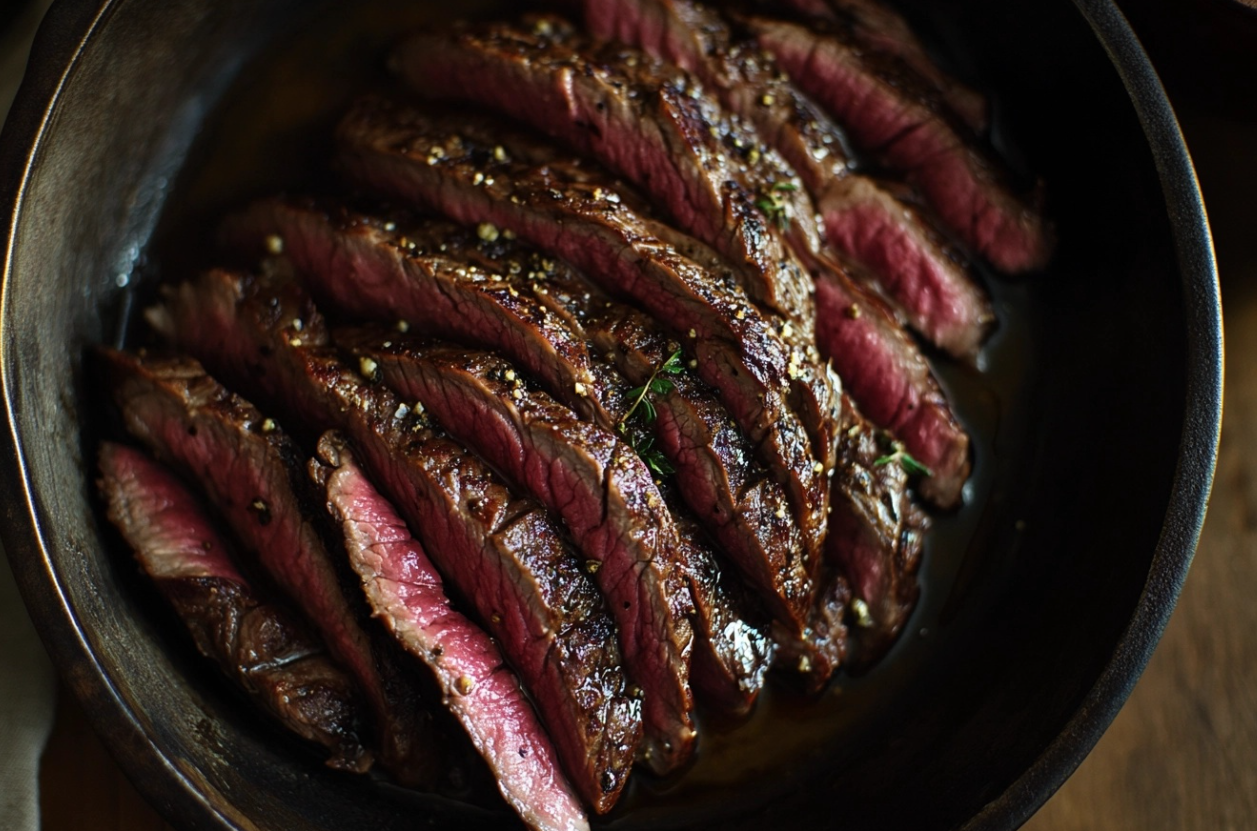
Step 4
Set your oven to preheat at 160°F (70°C). Lay a pan or a sheet of aluminum foil on the oven floor to catch any drips.
Step 5
Take the venison strips out of the marinade and gently shake off any excess liquid.
Step 6
Lay the venison strips in a single layer on a wire rack. Place the rack in the preheated oven and dehydrate for 6 to 8 hours, or until the venison reaches your preferred texture.
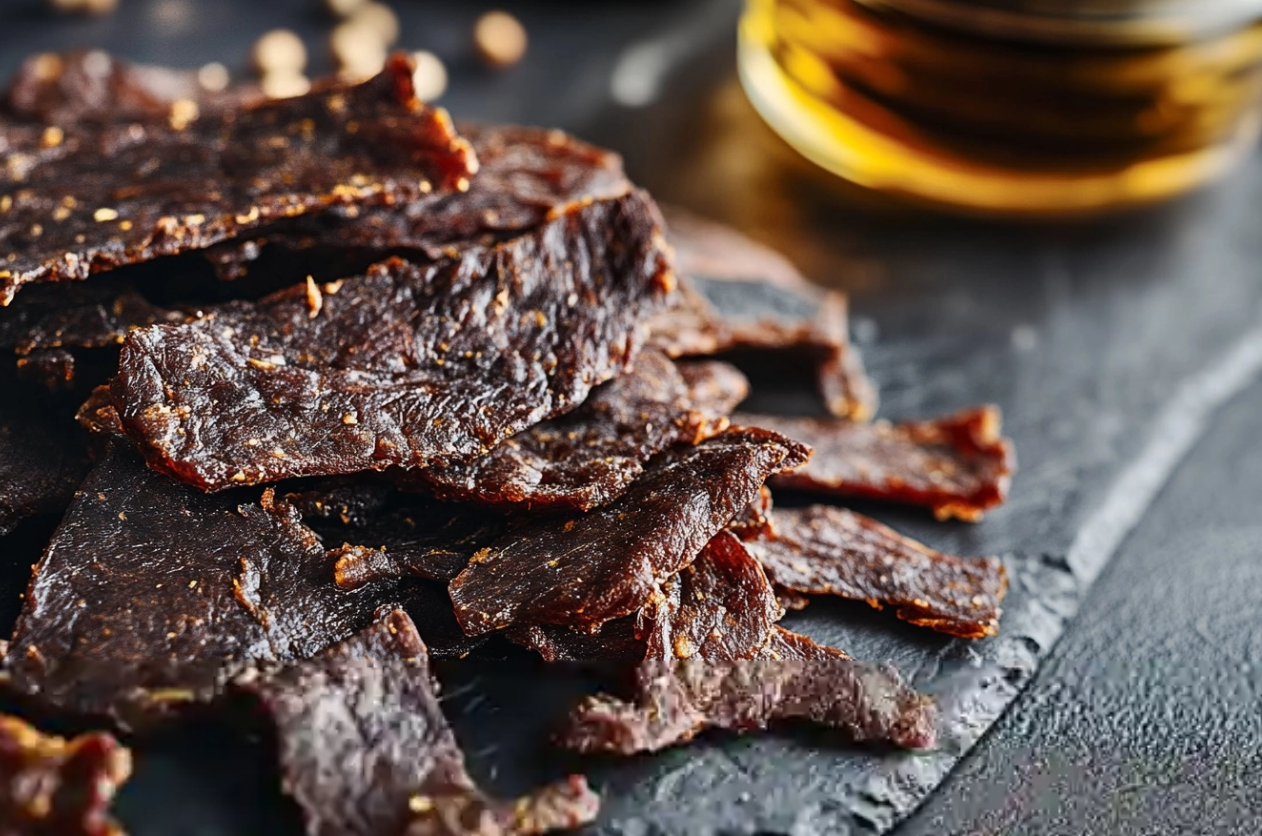
Advanced Techniques for Deer Jerky Recipe
Smoking for Enhanced Flavor
Smoking deer jerky adds a rich, smoky depth that can’t be replicated with liquid smoke alone. Using a smoker can infuse the meat with complex flavors depending on the type of wood used.
- Choose woods like hickory or mesquite for a strong flavor, or apple and cherry for a milder taste.
- Maintain low temperatures and steady airflow to prevent cooking during drying.
Achieving Different Textures
The texture of the jerky can be adjusted by altering the thickness of the slices and the drying time. Understanding these variables will allow you to create jerky that meets your preference, whether you enjoy it chewy or crispy.
- Thinner slices and longer drying times result in crispier jerky.
- Thicker slices and shorter drying times keep the jerky chewy.
Safety Tips on Curing Meat
- Adhere to safety protocols to prevent bacterial growth and spoilage. The right balance of salt and curing agents, such as sodium nitrite, will ensure your jerky is safe to eat.
- Use cure in your marinade to inhibit bacterial growth, especially if drying at lower temperatures.
- Always follow recommended safety guidelines for concentrations to avoid over-curing, which can affect flavor and safety.
Texture and Safety Balance
Finding the right balance between texture preferences and food safety can be challenging but is essential for producing high-quality jerky.
- Test different drying temperatures to see how they affect both the texture and safety of the jerky.
- Keep a close eye on the dehydration process to prevent the jerky from becoming too dry or remaining too moist, which could lead to spoilage. Discover more advanced recipes.
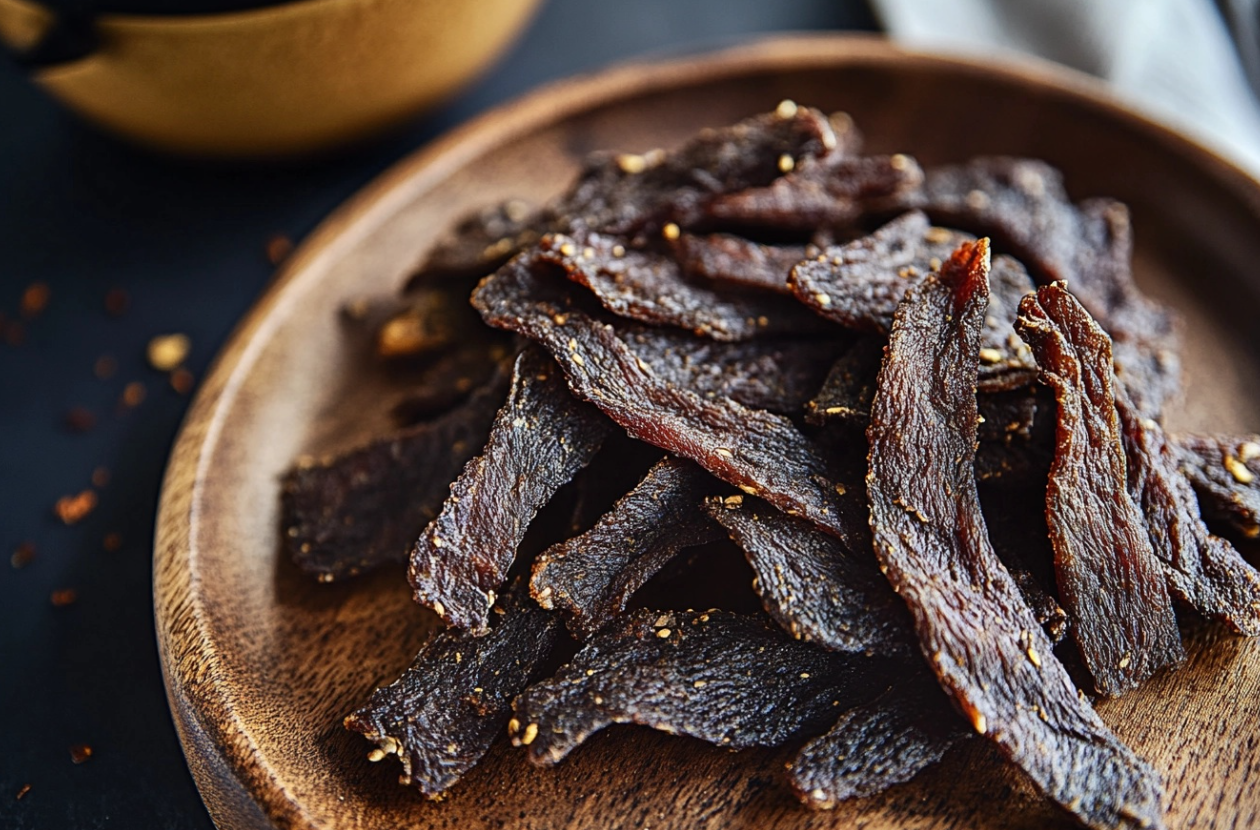
Maintenance and Storage Tips
Best Practices for Storing Deer Jerky Recipe
Proper storage is key to extending the shelf life of deer jerky. Proper storage safeguards jerky’s quality and longevity.
- Shield jerky from sunlight in a cool, dry locale.
- Employ airtight containers or vacuum-sealed bags to stave off air exposure.
Packaging Options for Longevity
Choosing the right packaging can significantly affect how long your jerky remains fresh and tasty. Airtight packaging is paramount for sustained jerky quality.
- Vacuum sealing is ideal for long-term storage as it removes air that can lead to oxidation and moisture buildup.
- For shorter-term storage, zip-seal bags with as much air pressed out as possible can be sufficient.
Recognizing Spoilage in Jerky
Being able to identify when jerky has gone bad is important for ensuring that you are consuming a safe product. There are several signs that jerky has spoiled.
- Vigilantly inspect for mold, identifiable by its white or green fuzz.
- Smell the jerky; any off or sour odors are indicators that the jerky should not be consumed.
- Feel the jerky; if it feels unusually sticky or moist, it may be unsafe to eat.
Ensuring Long-Term Enjoyment
Following these storage and maintenance tips will help ensure that you can enjoy your homemade deer jerky for months to come.
- Routinely check stored jerky for spoilage indications.
- Rotate your stock by using older jerky first and replacing it with freshly made batches to keep your supply fresh and safe.
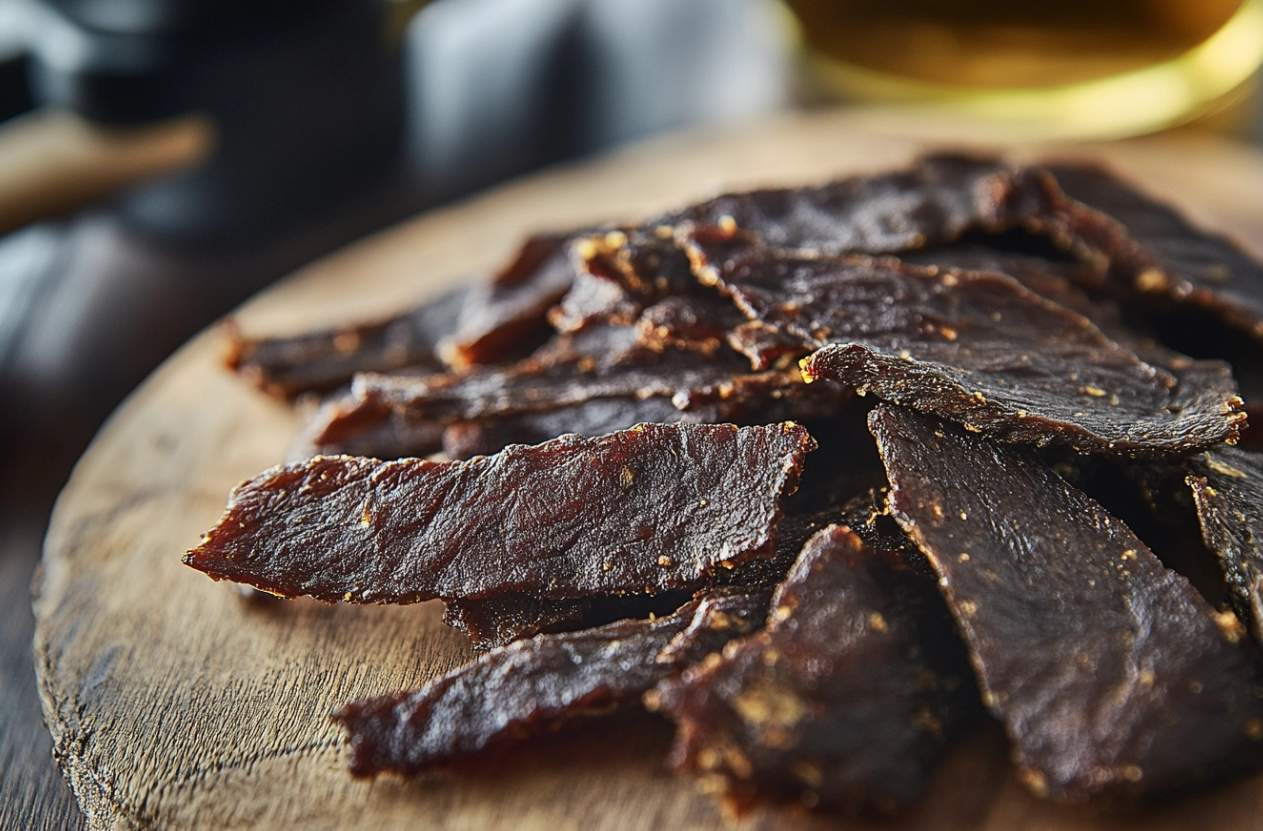
Dietary Adaptations
Gluten-Free Deer Jerky Options
Making deer jerky that adheres to a gluten-free diet involves substituting certain ingredients typically found in marinades. Focus on gluten-free soy sauce and avoid any seasoning blends that may contain gluten.
- Opt for tamari as a gluten-free soy sauce alternative.
- Scrutinize ingredient labels for gluten-containing additives.
Low-Sodium Variations
Reducing sodium in deer jerky is beneficial for those monitoring their salt intake but still wanting to enjoy this flavorful snack.
- Opt for low-sodium soy sauce and reduce the amount of added salt.
- Incorporate natural spices and herbs to enhance flavor without relying on salt.
Keto-Friendly Jerky Modifications
Creating keto-friendly deer jerky means focusing on high-protein, high-fat ingredients while limiting carbohydrates.
- Avoid sweeteners and high-carb additives in the marinade.
- Embrace healthy fats like olive or coconut oil, adhering to keto principles.
Nutritional Benefits
Deer jerky can be a healthy snack option when prepared with attention to dietary restrictions and nutritional balance.
- Abundant in protein and low in fat, particularly when crafted from lean cuts.
- Boasts essential minerals like iron and zinc, vital for well-being.
Tailoring to Allergies and Sensitivities
Adjust recipes to avoid common allergens such as dairy, nuts, and soy, ensuring everyone can enjoy homemade deer jerky without concern.
- Substitute any allergenic ingredients with safe alternatives.
- Always disclose the full ingredient list when sharing or selling jerky to ensure safety for all consumers.
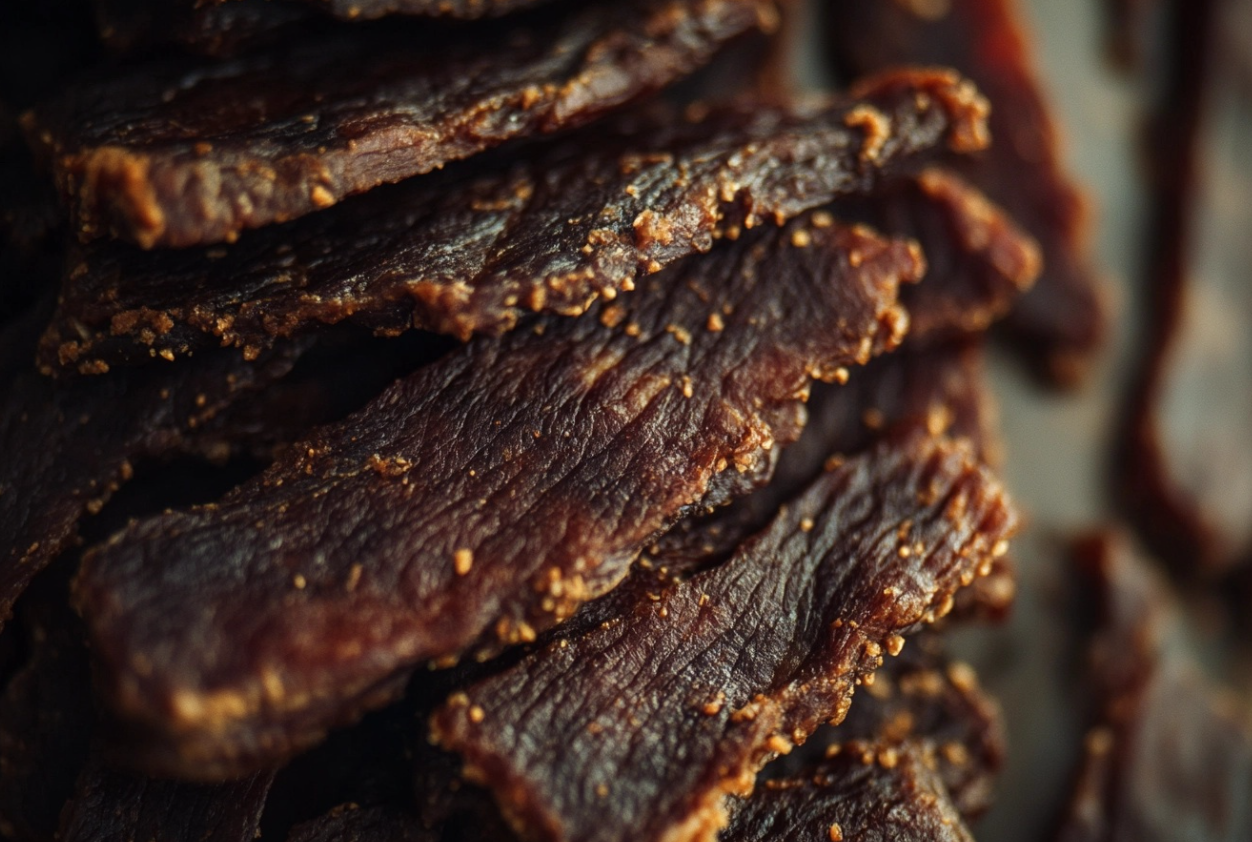
FAQs and Troubleshooting
Common Questions About Making Deer Jerky Recipe
People often have several queries when they start making deer jerky, especially about the safety and techniques involved.
- How thin should I slice the meat? Aim for 1/4 inch thick to ensure even drying.
- Can I use frozen deer meat? Yes, thaw it properly to maintain texture and flavor integrity.
Addressing Uneven Drying
Uneven drying is a common issue that can lead to partially dried jerky, which is neither pleasant nor safe.
- Ensure that meat slices are uniform in thickness.
- Rotate trays during drying to ensure even processing.
Flavor Imbalances in Jerky
Getting the right flavor balance can be tricky; too much seasoning can overwhelm, while too little may result in bland jerky.
- Start conservatively with seasonings and adjust to taste.
- Remember that flavors intensify during the drying process, so less can be more.
Tips for First-Timers
First-time jerky makers might feel overwhelmed, but focusing on the basics can yield excellent results.
- Keep the setup simple: use proven recipes and focus on mastering the drying process.
- Monitor closely and adjust based on the results of your first batch to improve future attempts.
